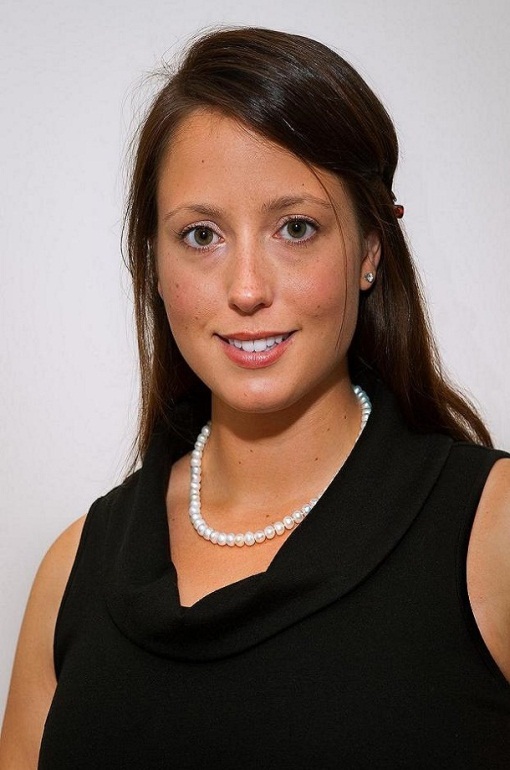 |
| Abbey Donahue |
Abbey is a Design Project Engineer for Areva TN and has worked in the nuclear industry for five years. Abbey is also the professional development chair of the North American Young Generation in Nuclear (NAYGN). Follow her on Twitter, @chatteyabbey.
“What do you do?” Like many places, in Washington, D.C., it’s a question that comes up in just about every conversation. “I’m an engineer at a nuclear energy company,” I reply. The most frequent reaction is an “Oh” that varies in intonation and accompanying expression. At times it reflects disinterest, other times, concern, and occasionally genuine interest. The fact of the matter is that I have tremendous passion for what I do. What might that be? I’m happy to share a bit about the what and the why.
What I do
 |
| AREVA's New Transport Cask |
moving into project engineering at
I love that nearly every day presents a new technical challenge where I get to collaborate with other engineers and work towards a solution. The way our customers are operating their plants is different than when our dry storage systems were first designed. Used nuclear fuel still generates decay heat, even after it is done producing power in a reactor. These days the utilities are using their fuel more efficiently, and as a result, the used nuclear fuel generates more decay heat. AREVA TN has improved our NUHOMS® design to store fuel with more decay heat while maintaining the safety and quality standards demanded by the public, our customers and our regulator. This is achieved through calculation and methodology improvements, better understanding of material properties, and physical design improvements in license amendments or new system designs. It’s in these licensing amendments and new product designs that the design engineers get to exercise their innovation muscles and develop new solutions.
Working in the nuclear industry has been very rewarding, and there are many growth opportunities at AREVA. During the past five years, I have worked on pressurized water reactor (PWR) core design in Lynchburg, VA, boiling water reactor (BWR) core design in Richland, WA, and with the criticality and shielding group in Columbia, MD. These three positions were part of AREVA’s Voyager Program , a rotational program focused on internal mobility and developing engineering talent. Through these roles, I’ve been able to work on the front end of the fuel cycle – analyzing the fuel before it goes into the reactor and during reactor operations – and on the back end of the fuel cycle – where the fuel is used and ready to be removed from the fuel pool and put in dry storage.
Why it matters
It gives me a great sense of pride to be working on developing innovative solutions to support an energy source that provides nearly 20 percent of America’s safe, clean and reliable electricity. The de-carbonization of our energy mix is in progress, but our ability to maintain and improve upon our trajectory depends in large part on the contribution of the 100 nuclear power plants that currently provide nearly two-thirds of our low-carbon energy. I realize that a lot of people have questions and concerns about nuclear waste, even though the waste associated with an average American’s lifetime supply of nuclear energy fits into a container the size of a soda can. While current reactor technology does produce nuclear material that needs to be safely handled and managed (hence, my work in designing robust and secure storage solutions), research and development are underway to design reactors that could run on the used nuclear fuel currently stored in our dry-shielded canisters at nearly 50 percent of U.S. nuclear facilities.
I love what I do because it is challenging, and also because it is a way for me to contribute to our sustainable clean energy future. As my career has progressed, each day I develop a greater appreciation for what engineers do to have a positive impact. I’m proud to be a nuclear engineer, and am excited to continue contributing to an industry that supports safe, clean, reliable energy, and provides opportunities for people of my generation and future generations to make a difference.
Comments
That's the main problem with nuclear's image:: the nuke community just sits back and makes the public educate themselves on nuke issues like a treasure hunt. They don't sell cars or cat food or beer or even computers like that -- They THROW info about them at you with Ads. It sounds too simple but it WORKS! Don't make things anymore complicated selling folks on nuclear -- get reach and teach them!
because we know current students are the ones who will listen and have little bias from outside sources. There are so many positive things about nuclear and the public has been so influenced by the media that the only thought that comes to mind is Chernobyl, Three Mile Island, and Fukashima. There are over 435 active nuclear plants that are currently running in the world in which most of them have been active for over 30 years without an accident. From lessons learned and regulation from organizations such as the NRC, nuclear power is the safest energy in the world by far. I don't want to get too far into detail on a post like this despite the fact that you want more information, but as it was posted above, the details and information are available everywhere for whoever wants to learn more. We can only hope to spark interest so that people will passionately learn for themselves, there is just too much information out there to teach to every individual. Great post Abbey! I agree that it is important that the workers faces and motivations are visible when talking about nuclear, it is very impactful on the reader.